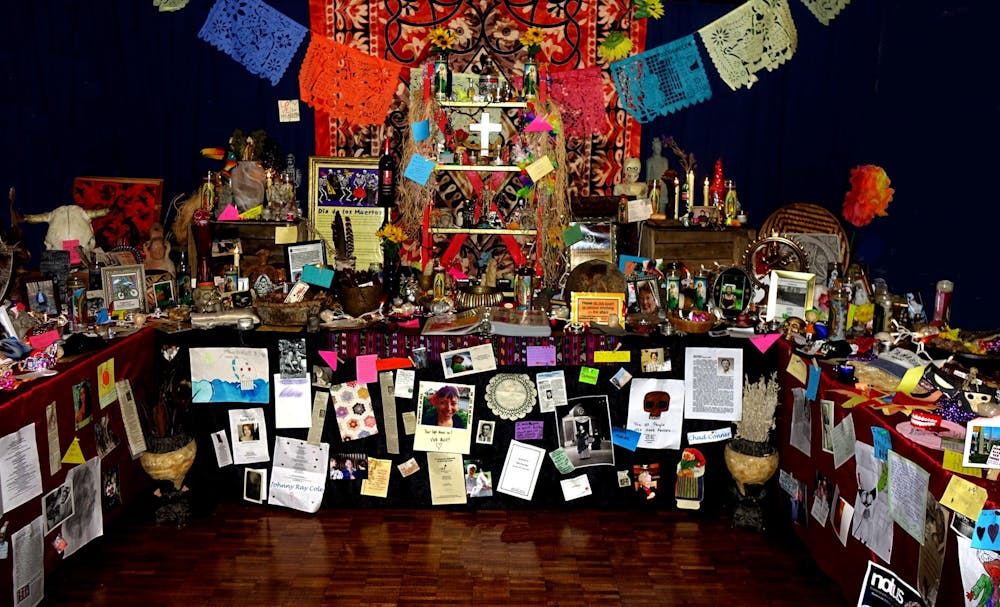The tables overflow with photos, mementos and memories. String lights spill over a black velvet tablecloth and weave their way through pictures in frames, electric candles and vases of yellow flowers to a book of notes in the center. One, written in a child’s uneven block lettering, only has one word: “Granny.”
The Bloomington Day of the Dead Community Altar was created by Bloomington residents Michael Redman and Jaime Sweany in 2006. Ever since, members of the community have been leaving gifts and messages for loved ones who have passed and, for many, it’s become a tradition. The altar is open 10 a.m. to 4 p.m. and will have a closing ceremony on Nov. 2.
It’s now located at the Monroe County History Center in its 16th year. At this point in the pandemic, its caretakers feel it’s needed now more than ever.
“Over the years, people have told me what it means to them,” Redman said. “It’s not like a funeral, it’s remembrance. Remembering the good times, and the bad times and those times in between.”
The community altar offers a space for the Mexican traditions of Day of the Dead, or Día de los Muertos in Spanish. A mix of native Aztec beliefs and colonial Spanish Christianity, the holiday is meant to celebrate the life of those who have passed away, according to Lillian Casillas, director of La Casa/Latino Cultural Center.
In remembrance, families and friends traditionally put out candles, marigolds and food. They decorate with papel picado, colorful banners made of bright tissue paper cut to reveal designs. While food isn’t allowed at the Bloomington Community Altar, many of these traditions can still be seen.
“The way you remember them is storytelling,” Casillas said. “It’s in the stories where you bring them to life, you keep them close to yourself.”
The community altar holds a closing ceremony to do just that. On the evening of Nov. 2, the Day of the Dead, the Bloomington community is invited to come together and talk about their loved ones who have passed.
The altar has grown beyond its roots. Since selling the gallery where the altar began in 2011, Sweany’s taken a step back from working with it. She still returns every year, and calls it a community treasure.
It’s a treasure that’s more important than ever this year, she said. The pandemic has left many in the community grieving. Sweany said that she herself has lost friends to COVID-19 and, because of that, feels that the altar is more meaningful than ever.
“There’s just been a lot of community loss,” Sweany said. “It helps relieve some of the sadness to me, to go and see this altar where all these people are remembered.”
Rachel DiGregorio took over caretaking duties after Sweany stepped down. To her and Redman, the altar’s more than just an annual event. It’s a part of their lives, they say, and it’s a lot of work and responsibility.
Redman said the two spend approximately two full weeks of work on the altar: putting it up, maintaining it and taking it down. Throughout the year, when the altar’s not in use, the items on the altar sit in DiGregorio’s attic and Redman’s house, which he described as looking like it was from a Wes Anderson movie.
Taking care of the altar has left them both with plenty of stories. Their voices grew tender as they described notes for pets, by kids and about friends. A note that’s stuck with Redman for years is from a young twin to the other.
But more than that, he said, curating the altar is satisfying, because of how important it is to visitors.
“Some people come and they’ll leave a note and eat some cornbread and drink the spicy hot chocolate and hang out with their friends,” Redman said. “Some people will come and be deeply affected. And it’s for those people.”






